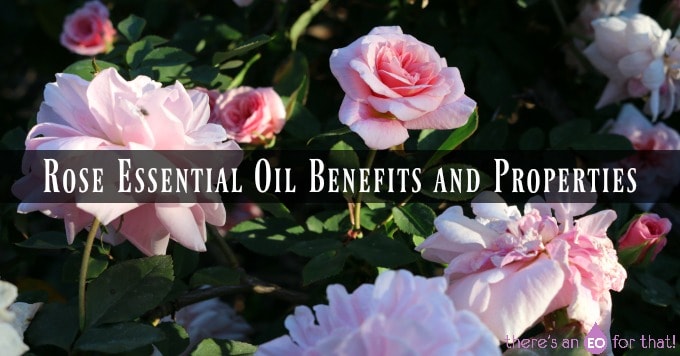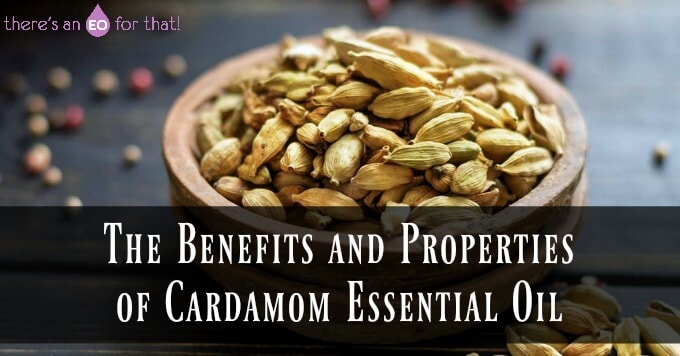
The aroma of bergamot has graced my tea cup every morning since my very first London Fog, and I haven’t looked back. Its bright and refreshing scent paired with a balanced citrusy and slightly floral flavor has become an indispensable component of my waking routine and my essential oil palette.
The Benefits and Therapeutic Properties of Bergamot Essential Oil
Botanical Names
Citrus bergamia; Citrus aurantium subsp. bergamia
Family
Rutacceae (citrus)
Origins
The origins of bergamot are somewhat obscure. Some say that Christopher Columbus brought bergamot to Bergamo Northern Italy from the Canary Islands. Others believe that bergamot originally came from tropical Asia and is now extensively cultivated in Southern Italy, particularly in the Calabria region. How it got there exactly, is anyone’s guess.
The name “bergamot” comes from an Italian city, that of Bergamot in Lombardy, where the essential oil of this unique citrus is made. It is also produced in the Ivory Coast, Morocco, and Corsica.
The bergamot fruit is extremely sour, and as a result, the tree is primarily cultivated for its essential oil. Since the tree cannot be planted from seed, it is commonly grafted to bitter orange trees.
It is said that grafting bergamot to lemon rootstock gives it a finer quality than other bergamot oils, but this has not been confirmed.
The most commonly available bergamot essential oils are:
1. Bergamot essential oil
2. FCF Bergamot essential oil (furocoumarin free aka “deterpenized”)
Extraction Method and Essential Oil Characteristics
Bergamot essential oil produced through cold expression using the rind of the nearly ripe fruit.
The oil is a green or olive green, mobile liquid with an extremely rich, sweet and fruity top note followed by an herbaceous slightly balsamic body. It is pleasantly uplifting to the mind and spirit.
When exposed to light or oxygen, the essential oil will lighten to a yellow or pale olive brown.
Historical and Traditional Use
Bergamot’s origins are shrouded in mystery. The word “bergamot” may have come from the shape of the fruit which resembles the bergamot pear.
Its popularity increased when the toilet water known as eau-de-cologne made its debut in Italy during the 16th century. This stimulated the production of bergamot essential oil as it is one of the main ingredients.
Bergamot essential oil imparts a rich and pleasant flavor to Earl Grey tea and is considered one of the most popular essential oil in perfumery.
Traditionally, bergamot essential oil has been used in Italian folk medicine to cool and relieve fevers, expel intestinal worms, and protect against malaria.
French Medicinal Uses
In France, it is used to treat agitation, loss of appetite, colic, depression, indigestion, infection, inflammation, insect repellent, insomnia, intestinal parasites, rheumatism, stress, and vaginal candida.
Other Possible Uses
Bergamot essential oil can be used to treat acne, anxiety, appetite regulation, boils, bronchitis, carbuncles, cold sores, complexion (oily), coughs, cystitis, digestion, eczema, emotions, endocrine system, fever, gallstones, gonorrhea, infectious disease, insect bites, lung irritation, psoriasis, respiratory infection, scabies, sore throat, tension (nervous), thrush, tonsillitis (acute), ulcers, urinary tract infections, varicose veins, and wounds.
Chemical Components
Bergamot essential oil is primarily composed of monoterpene hydrocarbons, monoterpene alcohols, and esters.
A typical chemical composition will look like this:
α-pinene (1.0%), β-pinene (5.7%), myrcene (0,9%), limonene (33.0%), α-bergamotene [bergaptene] (0.23%), β-bisabolene (0.57%), linalool (13.35%), linalyl acetate (31.1%), nerol (0.1%), neryl acetate (0.42%), geraniol (0.05%), geraniol acetate (0.46%), α-terpinol (0.13%)
Therapeutic Action
Bergamot essential oil is analgesic, antidepressant, antiseptic, antiviral, carminative, cicatrisant, deodorant, digestive, febrifuge, sedative, stomachic, tonic, vermifuge, vulnerary.
Esoteric Uses/Action
• Astrological – Sun
• Body Type – Endomorph
• Chakras – 3, 4, and 5 (especially good in times of grief)
• Character – Mildly Yang
• Crystals – watermelon tourmaline
• Element – Fire
• Number – 2
• TCM – Qi stagnation (Liver-3, GB-34)
Fragrant Influence
Calming, relieves anxiety, mood-lifting qualities.
Blends Well With
• Cedarwood
• Chamomile
• Clary sage
• Coriander
• Cypress leaf
• Eucalyptus
• Geranium
• Grapefruit
• Jasmine
• Juniper
• Lavender
• Lemon
• Lime
• Mandarin
• Marjoram
• Melissa
• Myrtle
• Neroli
• Palmarosa
• Patchouli
• Sweet orange
• Tangerine
• Violet leaf
Bergamot essential oil is known to have a fixative effect when used in high concentrations making it perfect for use in perfumery.
Indications for Bergamot Essential Oil
Digestive System
Bergamot has a carminative effect on the digestive system making it useful in instances of colic, flatulence, and indigestion.
It is particularly indicated for loss of appetite and nervous digestive distress associated with emotional stress.
Immune System
Bergamot essential oil has been found to combat and inhibit the herpes simplex 1 virus which is known to cause cold sores. A great recipe to use for treating cold sores, chicken pox, and shingles includes bergamot (FCF), tea tree, and lavender in equal parts well diluted in carrier oil.
Apply to the affected area 2-3 times daily using a clean cotton ball or swab.
Nervous System
Bergamot’s fruity yet gentle scent gives the EO a sedative and uplifting quality. It is recommended for use for those who suffer from tension (both physical and nervous), anxiety, and depression.
The EO is also indicated for those with eating disorders (especially anorexia nervosa) due to its appetite stimulating effects and anti-depressant properties.
Skin Care
Bergamot is antiseptic in nature making it especially good for treating wounds, herpes, and acne breakouts. It helps regulate sebum production for oily skin types and makes for an excellent deodorizing agent in homemade deodorant and house cleaning recipes.
Bergamot is also good for treating eczema and psoriasis, especially when mixed with rock rose and helichrysum.
Urinary System
Bergamot essential oil is useful in treating cystitis and other urinary tract infections. When used in the early stages, bergamot EO can prevent the infection from spreading. A good way to do this is to add 3 drops of the EO to some Epsom salts and then running a bath. Soak for 20 minutes.
Energetics
The energetics of bergamot essential oil are neutral to mildly yang with both cooling and warming characteristics. It is relaxing, restorative, and calming. Its energetic qualities enhance circulation and free flowing Qi, allowing the body to release pent up feeling and emotions like anger.
It is the release of these build-up of these emotions that can lead to depression, insomnia, anxiety, and sudden mood swings. Bergamot EO can help you relax and “let go”.
Personality Profile
Bergamot personalities are fresh, youthful, caring, considerate, and bursting with energy with a joyful approach to life.
They help you regain self-confidence and uplift and refreshe the spirit and evoke warmth and joy in the heart.
Mode of Administration and Application
Dilute one part bergamot essential oil with one part carrier oil (like sweet almond, jojoba, fractionated coconut oil, etc.).
Works well in massage, compresses, baths, sitz-baths, douche, skin care, direct inhalation (smelling directly from the bottle), diffused, and vaporized.
1. Apply 1-2 drops on location
2. Apply 1-2 drops on chakras/vitaflex points
3. Directly inhale from the bottle for 3 deep breaths
4. Diffuse - 5-10 drops for 20 minutes 1-2 times daily (I love this diffuser)
Apply diluted to the forehead and temples for emotional relief (be sure only to use bergaptene-free bergamot essential oil for direct topical application.
Safety
Bergamot essential oil is extremely photosensitizing/phototoxic. The IFRA recommends that bergamot oil be limited to a maximum dilution of 0.4% in the final product, except for wash-off products and recipes.
DO NOT apply bergamot essential oil to skin that will be exposed to sunlight or ultraviolet light within 72 hours unless it is FCF bergamot oil.
References
Essential Oils Desk Reference – Third Edition
Essential Oils Integrative Medical Guide
Reference Guide to Essential Oils
The Complete Guide to Aromatherapy
You may also enjoy reading:
10 Bergamot Oil Uses you Need to Know!
6 Health Promoting Earl Grey Tea Benefits
How to Make Earl Grey Tea Using Essential Oils
Essential Oil Profiles and Therapeutic Uses





Lanie Hall says
This is the most informative page on any essential oil I have never seen ♡ thank you so much for such a deep dive!
Tash says
That's the goal, Lanie! 🙂 Glad you like it!
Shilo Solum says
My daughter (6) years old developed a slight uti. Could this help her until I can get her to the pedestrian on Monday?
Tash says
Hi Shilo!
I hope things worked out for your daughter! One of the best essential oils to use for UTI is myrrh well diluted in a carrier oil. maybe just 1 drop in 1 TB for a child of that age. You can then very gently apply that blend topically. Additionally, you can take oregano oil (not the essential oil) internally to act as a natural antibiotic. I hope she's feeling better! <3